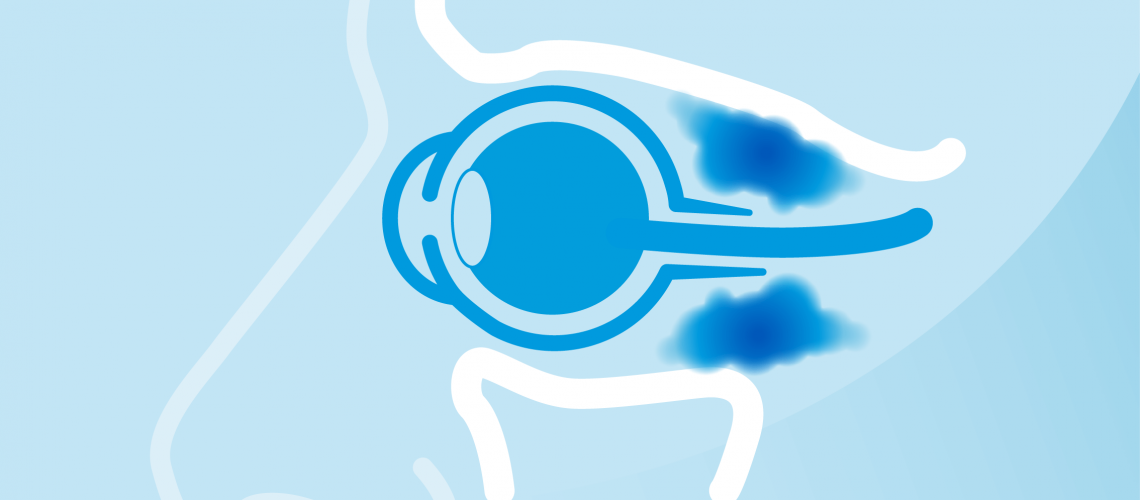What does the treatment involve?
Firstly, the thyroid function must be evaluated and appropriately treated by an Endocrinologist. The eye disease, however, may continue to progress after an Endocrinologist has treated the thyroid abnormality. The disease and therefore the treatment are divided into two periods.
Active Phase – This phase usually lasts between 6 months to 3 years and requires careful monitoring until the problem has stabilized. This involves medical treatment such as, artificial tears (drops) and ointments, and occasionally steroids and radiation treatment. Uncommonly orbital surgery is required. Smokers have a longer and more severe active phase.
Stabilised Phase – This phase involves correcting permanent problems that remain once the active phase has “burnt out”. This is defined as there being no changes in the symptoms/signs of the disease for at least 6 months. These problems include double vision, eye protrusion or eyelid retraction and are generally repaired surgically.
Surgery
Generally, surgery for thyroid eye disease is performed in the following sequence (although not every stage is required for every patient): your specialist will go through each of these with you and determine the best course of action for your specific condition;
1. Orbital Decompression
This surgery is required by only a small percentage of patients with Thyroid Eye Disease and is not undertaken without due consideration of alternative options. The surgery is effective but as with all surgery there are risks involved although serious complications are rare.
The indications for this surgery are as follows:
- Compression of the optic nerves by enlarged eye muscles causing loss of eyesight.
- Severe protrusion of the eye preventing the closure of the eyelids with exposure of the cornea.
- Protrusion of the eyes causing significant cosmetic deformity.
This involves the removal of part of the walls of the orbit (eye socket) separating the orbit from the neighbouring air-filled sinuses. This will enlarge the orbits and allow the orbital contents to settle back and thus reduce the degree of protrusion of the eyes. Most patients require removal of two walls of the socket, the outer wall (on the ear side of the orbit) accessed through small cosmetic incision in the laugh lines and the inner wall accessed through the nose with no skin incision at all. At the time of surgery some fat from the orbit behind the eyeball is also removed again allowing the eye to settle back to a more natural position.
Common post-operative problems include double vision and loss of sensation affecting the cheeks, the side of the nose, and the upper teeth. Loss of sensation it can last for months and at times may be permanent. If double vision is not present prior to surgery there is a 10-20% risk of it occurring post operatively. If double vision is present prior to surgery it may become worse post operatively. Blindness is a rare complication but must be considered prior to surgery. Sometimes radiotherapy and/or steroids may also be required.
2. Eye muscle surgery
This surgery attempts to eliminate double vision. It is only undertaken when the deviation of the eyes has been stable for a period of six months. Stick on prisms to help reduce the double vision, are fitted to glasses, whenever possible, until surgery is appropriate. This surgery is performed by a small group of ophthalmic sub-specialists called Squint Surgeons. Your specialist will refer you for this should it be required.
3. Eyelid repositioning surgery
Upper and lower eyelid retraction may be treated by lengthening the tendons of the muscles that open the eyelids. This is usually performed under local anaesthesia, allowing greater accuracy to be achieved with regard to the final height and contour of the upper eyelids.
Sometimes repeat surgery is needed to further modify the height and contour of the eyelids. The aim is for improvement and attaining a completely normal contour is sometimes not possible. Lower eyelid retraction may be treated by means of grafts taken from the hard palate (roof of the mouth), ear cartilage or occasionally manufactured graft materials.
4. Blepharoplasty
Severe eyelid swelling in thyroid eye disease may leave the eyelids with a baggy appearance and with excess skin. Blepharoplasty involves the removal of excess skin and fat from the lids.
Upper eyelid surgery will give a smoother, less heavy and tired appearance of the upper lid. Lower eyelid surgery aims to achieve a smoother appearance under the eyes and reduce bags and wrinkles


